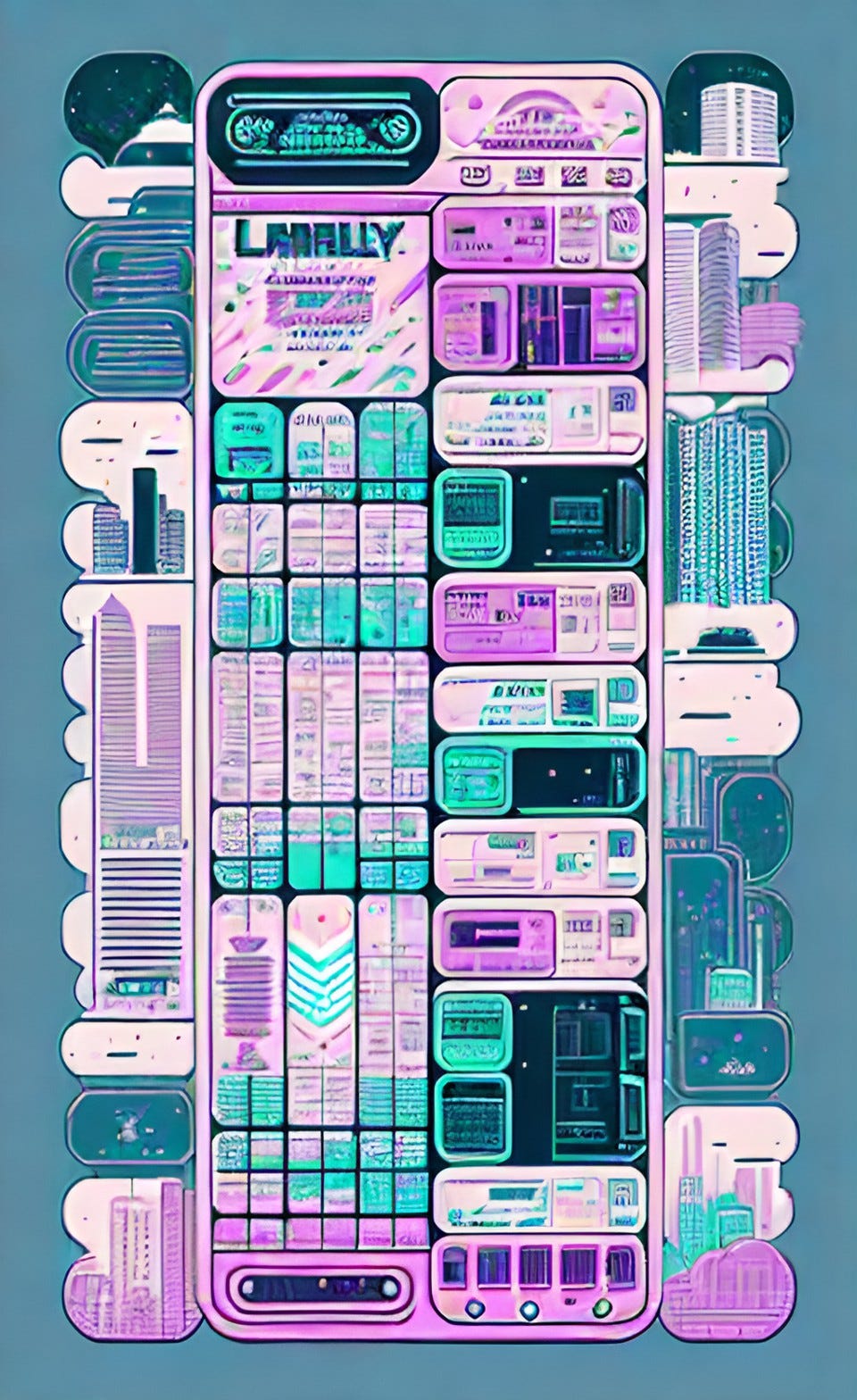Transmission 24.6: WORLDBUILDING COLLECTION: CINEMATIC UNIVERSE
Here come insights and behind-the-scenes from our futures practice! A glimpse into our uncommon perspective and approach, to keep updated or to know what to expect when time traveling with us.
Summer is a concept season at The Time Travel Agency:
Worldbuilding for adaptation.
In each broadcast of The Time Travel Transmissions two sections:
Worldbuilding Collection, our latest tools for worldbuilding.
Hyperlink Stroll, a chill summer activity inspired by The Wiki Game.
Concerned with the question 'How does Worldbuilding fit in a process of adaptation?' we’ll look into the worldbuilding that happens in our futuremaking.
What if the process of adaptation was pleasurable? The playful nature of worldbuilding is an opportunity to feel so– worldbuilding processes and tools teach how to access creativity and pleasure especially when we are stressed. What if by stepping into a future world we felt good about where things are going?
Our Nordic experiments embrace play and social participation while our American experiments focus on implementing, taking risk, and adapting fast. When play culture meets adaptation culture, there’s a lot to learn from each other.
Like open-heart surgery, making futures is invasive, yet our clients work from the assumption that their organization is going to make it.
Worldbuilding is a stage in our process that allows futures to be explored.
We make worlds so our clients feel what it’s like to live in and affect those worlds;
to feel agency.
These are behind the scenes of our most recent worldbuilding tools,
developed between Sweden and California this year
for organizations envisioning how to move forward.
Here are the most recognized stages of our process:
Inside Worldbuilding is 'Cinematic Universe'
TOOL 6: CINEMATIC UNIVERSE
WHAT ‘CINEMATIC UNIVERSE’ IS & LOOKS LIKE
CINEMATIC UNIVERSE is a tool that functions as a map capturing an accumulation of elements within a vast narrative landscape. It offers timelines showcasing various parts of the map, indicating when and where specific events take (or took, or will take) place. On a very practical level, within their Cinematic Universe, worldbuilders are invited to consider, for instance, which aspects of their recent world they would franchise and how these elements would exist in different countries, times, or spaces… like McDonald’s or Claire’s.
The map itself takes the form of a captivating image, allowing individuals to zoom in and out to explore different details. Travelers determine the universe of their story, including its size, scope, and boundaries. Once built, the team shapes the narrative landscape with questions.
“Should we bring our understanding of time as it actually is to our interpretation of fictional time? What is the relationship between the fictional present and the reading present?” (Questions by Robin Le Poidevin)
Additionally, a unique group activity can take place, where each participant closes their eyes and place a finger on the map, and then collectively explore the multiple points and their relationship. This exercise prompts reflection on the butterfly effect and how each point on the map influences others.
And, when we tell those stories, will we choose the future or present tense? (If we choose the present tense, it invites us to engage in the fiction that we have actually arrived in the invented future).
‘CINEMATIC UNIVERSE’ DETAILS
The timelines within the Cinematic Universe are reminiscent of magnetic poetry on a fridge, featuring adjustable phrases that represent different events in time. The adjustable phrases become the building blocks of the map. This creative element allows for flexible storytelling, enabling worldmakers to rearrange chronology easily.
On the road to implementation, it’s especially important to take a moment to adjust priorities and possibilities. When each phrase represents a specific point in time, through this magnetic poetry-inspired approach, storytellers have the freedom to explore non-linear storytelling and experiment with a sequence of events. This interactive and tactile aspect of the tool allows for dynamic engagement, fostering a sense of progress as the map comes to life.
It's fitting to The Time Travel Agency that a tool which encompasses vast narratives ends up as a mundane presence in an everyday object such as the fridge.
By the way, timelines have also been known to appear in scratch-off lottery tickets, handmade paper boats, and the “egg drop” game.
A question for CINEMATIC UNIVERSE: We’ve heard that when no one is looking you start rearranging yourself, intertwining different storylines and characters in unexpected and nonsensical ways. How have map creators navigated this sudden chaotic narrative landscape, and what bizarre consequences have arisen from your mischievous meddling?
“It is true that I take pleasure in rearranging storylines to create unexpected combinations. I love finding out that long-lost sibling products discover their connections through serendipitous encounters orchestrated by this “meddling" tool. I wouldn’t call it a bizarre consequence when I merge time and space and allow for services to exist simultaneously in different dimensions (or countries). I love challenging storytelling norms and injecting an element of unpredictability into the worlds crafted within me. I do enjoy that at that point I again become a platform for collaborative worldbuilding, because it’s in everyone’s interest that I make sense once more.”
A chill summer activity inspired by The Wiki Game for those taking it easier this season: in each broadcast, three links creatively related to worldbuilding, to hop from one to another in a breezy digital stroll.
This is the end of summer. Let’s cozy up for autumn! The Time Travel Transmissions return soon. It was a pleasure to have you here.
And on LinkedIn and Instagram: MOVING DAY, a storyworld we built using IMPACT: Learning Edition, a game (from fellow inventors KnowledgeWorks in Pittsburgh) that ignites deep and systemic conversations about the future of learning, which we angled at the future of a city’s garbage economy.










